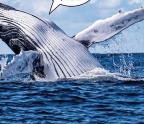The Nature Fakers
Oct 01, 2022
2 minutes

The main characters of bestselling books in the early 1900s weren’t kids or superheroes or people of any kind—they were animals. Nature writers published volumes of stories about animals they’d observed in the wild, and the public gobbled them up. The authors gave their subjects names like Lobo, the King of Currumpaw (a wolf), Raggylug (a cottontail rabbit), and K’Dunk the Fat One (a toad, obviously).
Like the, or making animals seem too much like humans. Some early-20th-century nature writers cared more about telling a good story than sticking to the facts. But they weren’t lying, they insisted. They just stretched the “historical truth” now and then.
You’re reading a preview, subscribe to read more.
Start your free 30 days





